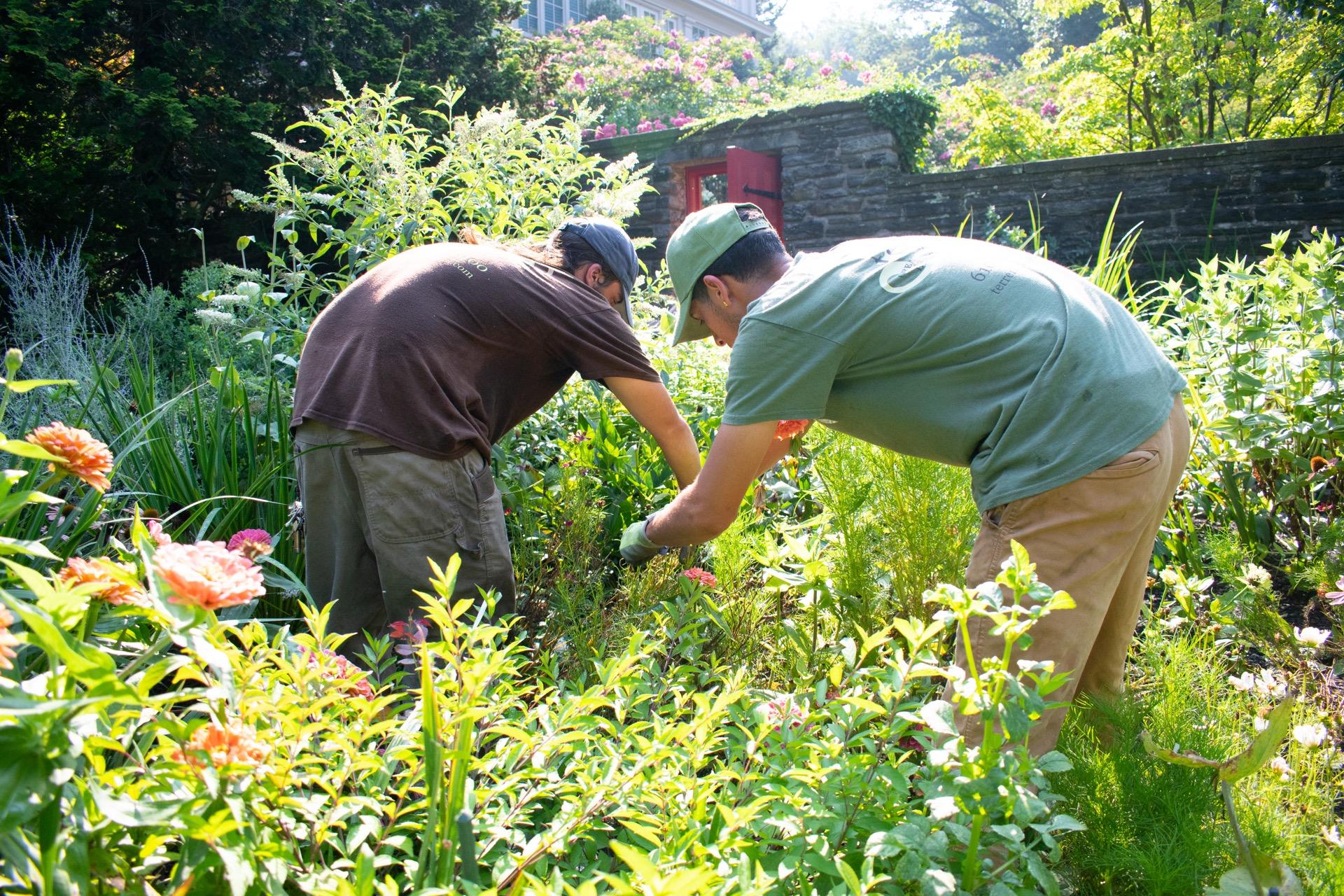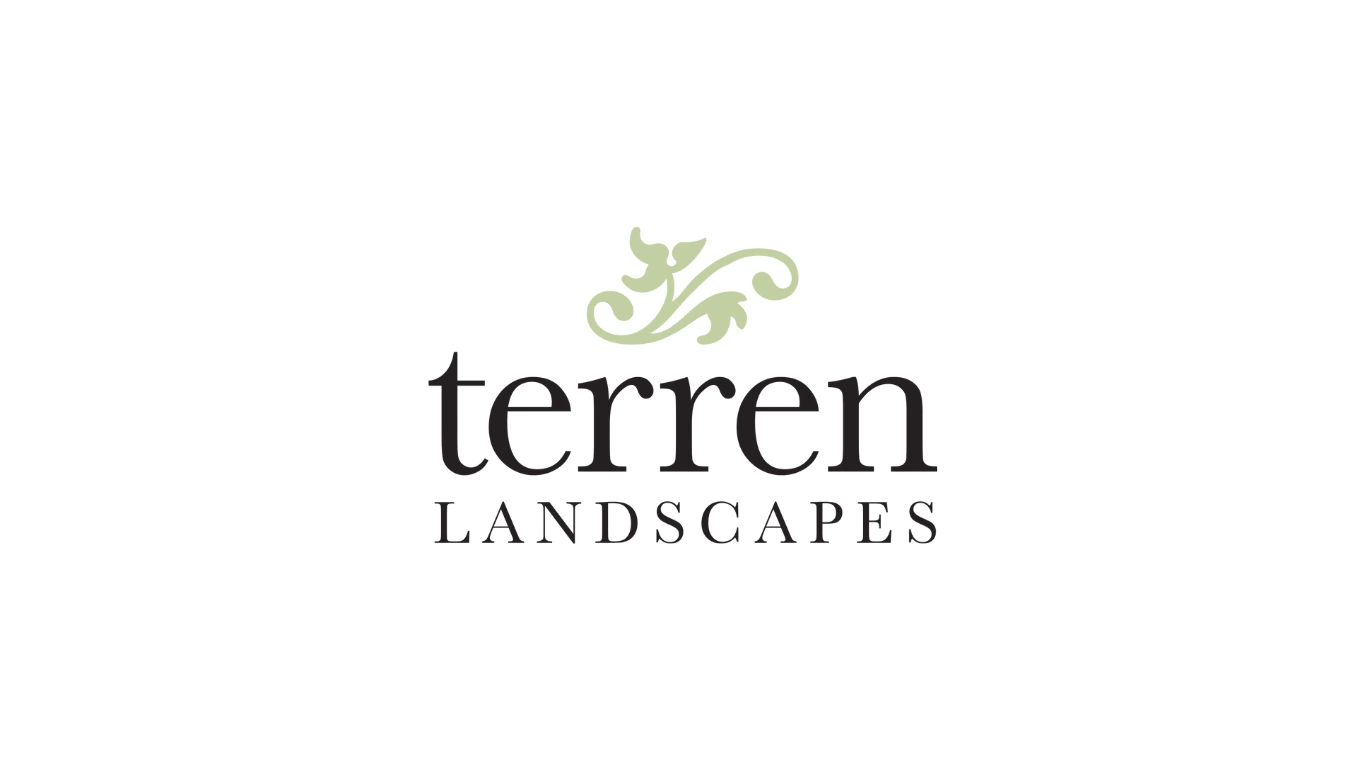June was national homeowner month, and as you can see while driving throughout the area, many homes are for sale, or have been recently sold. Here’s a list to help these new Main Line families with making the most of their property’s landscape.

Photo by Feverpitched/iStock / Getty Images
1. FULLY SURVEY YOUR NEW PROPERTY.
This step should really be taken before you even buy a new home. While a well manicured lawn and colorful plantings can be attractive, a home’s curb appeal can be deceptive. The cost of maintaining a property’s landscape is often overlooked and not factored into a home’s sale. Make sure there are no obvious landscaping challenges such as trees touching the home, visible foundation damage, or uncontrolled invasive species such as bamboo. Also take the time to determine what you will be able to do to your new property as many municipalities have construction restrictions such as the amount of land that can used as an impermeable surface (driveways, patios, tennis courts). This can throw a wrench in your new landscaping plans if you do not find out beforehand.
2. DECIDE IF ANYTHING IS URGENT.
This goes along with your initial survey but even after a careful examination a property may only present its flaws after a strong storm or tough winter. Trees which look sick or dead and are near your home should take top priority. During the first large rainstorm watch your basement to see if any moisture enters through the foundation or doorways, as this can be an indication of poor drainage. Also remember not to leave your lawn unattended for too long; whatever treatments the lawn had been receiving will wear off if not continued.
3. BECOME ACQUAINTED WITH ANY IRRIGATION SYSTEM.
This is probably the last thing you consider when moving into a new home but understanding your irrigation system can save your lawn and prevent hundreds of dollars in repairs. The interface for most irrigation systems is found in your garage, a shed, or pool house. From there you can learn the manufacturer and installer information as well as the layout and number of zones of your irrigation. You should learn directly from the system’s installers about timing, automation, and maintenance.

4. TAKE A CLOSE LOOK AT YOUR LAWN.
Now is the time to take a close look at your lawn. First identify the brown spots and any weed patches. There are a number of reasons for either occurrence but both can be treated with proper lawn care and property maintenance. For example, the most important factor in maintaining a healthy lawn is ample sunlight, which large trees can inhibit. Also make sure you find out about any previous lawn care, and inform your own landscaper of what has been done in the past. Now is the time to think about organic options too.
5. EVALUATE THE DRAINAGE AND STORMWATER SITUATION.
Take a look around your property and neighborhood and make a mental map of your elevation; it could affect your home more than anything else during your time there. If your home is at a higher elevation than the surrounding area then you probably have adequate drainage. But that also means you could have terrible stormwater, which inevitably draws the ire of neighbors and municipal authorities. If you’re at a lower, flatter elevation you could suffer from poor drainage, which can seep into your foundation and ruin your home. Either extreme is undesirable and if you feel your property suffers from one you should consult a professional landscaper.
6. TAKE A LOOK AT THE TREES.
You should have noticed by now if any trees were touching your home, leaning precariously over the street or driveway, or just seem dead or even unhealthy. But also consider how they affect your home aesthetically. Do you like the amount of privacy they provide or do you not appreciate how they block your view? Also keep in mind that trees can provide shade to cool your home during summer, and as long as the are deciduous, will shed their leaves to allow more sunlight to hit during the winter. These trees should Ideally be placed on the southern side of your home since we are in the Northern Hemisphere the sun will mostly hit that side throughout the year.
7. UNDERSTAND HOW SUNLIGHT HITS YOUR PROPERTY.
This can be hard for a working professional to do, but set aside a day to simply observe your property from dawn to dusk. Watch how the sun traverses the sky and where it hits your property and at what time. Pay attention to the shadows and especially to which areas receive the least and most sunlight. This information is invaluable if you plan on growing an annual garden or installing raised beds for vegetable gardens.

8. EVALUATE YOUR PROPERTY’S PRIVACY.
If you have any reservations about neighbors, it’s best to get this out of the way as quickly as possible. Installing fences may be the quickest way to gain privacy but can create friction between neighbors if done without previous discussion. Hedges are a more subtle and attractive way of creating privacy and will grow taller and thicker over time. You could also install trees, bushes, and ground cover that will grow over time to create a complete a lush natural barrier that will be appreciated by both sides.
9. TAKE A LOOK AT YOUR PLANTINGS.
Foundation plantings, annual beds, and curb plantings were probably some of the first things you noticed when you first visited, but there’s a big difference between attractive and healthy. Professional landscapers install specific plants for specific results in specific areas, and it’s important to figure out if what is there now is what is conducive to a healthy environment. Foundation plantings should be able to withstand the water and snow that falls from the roof as well as the runoff from.
10. BEGIN TO CONSIDER WHAT YOU WOULD CHANGE.
Now it’s time for the fun part. After surveying your new property in its entirety, becoming acquainted with its strengths and weaknesses, and reestablishing a lawn maintenance program with a landscaping professional, a new homeowner can go about using their imagination to craft the landscape of their dreams. Keep in mind everything you know about your landscape as well as your top priorities for what you want and a professional landscape designer will be able to guide you towards making your vision a reality.




